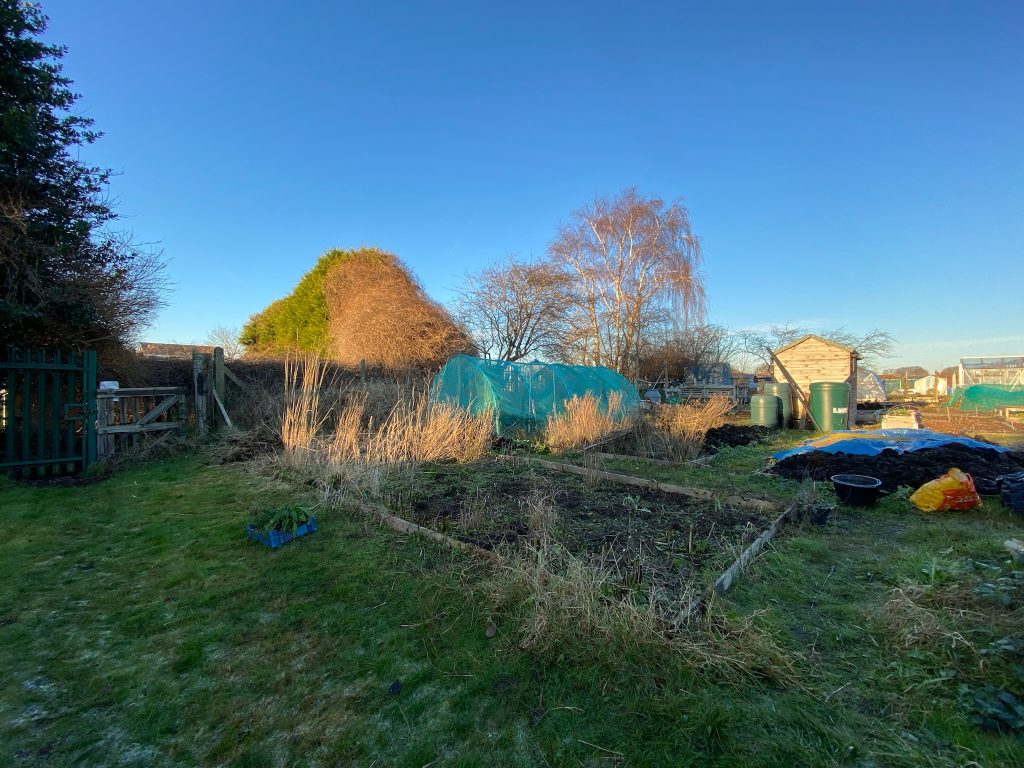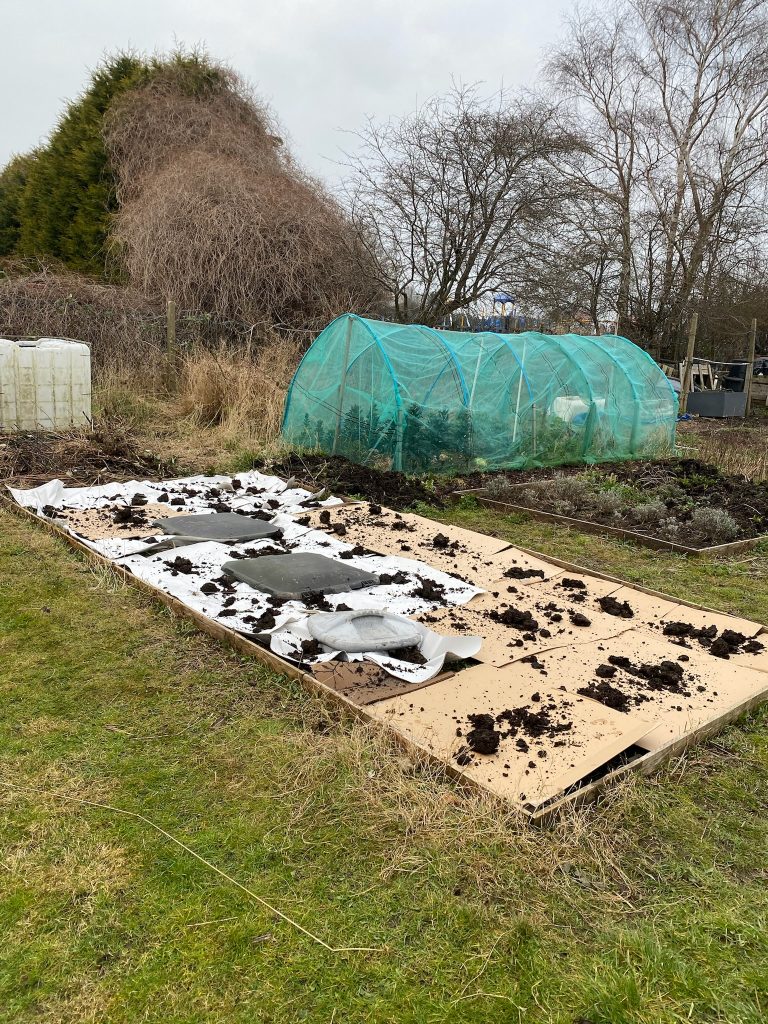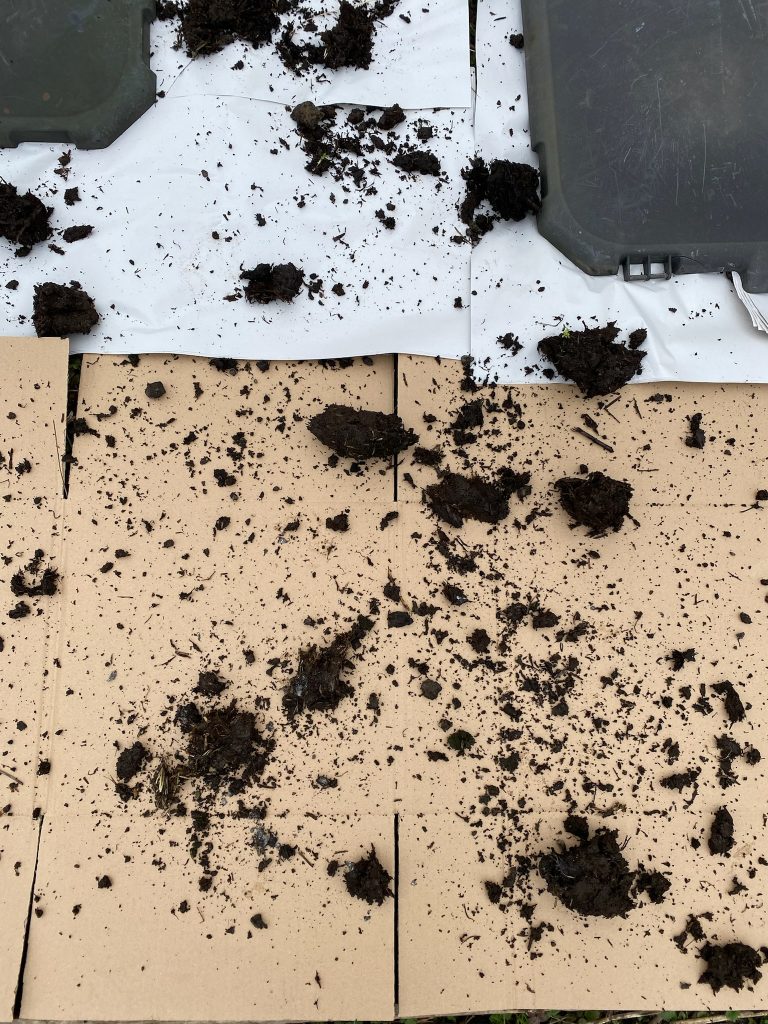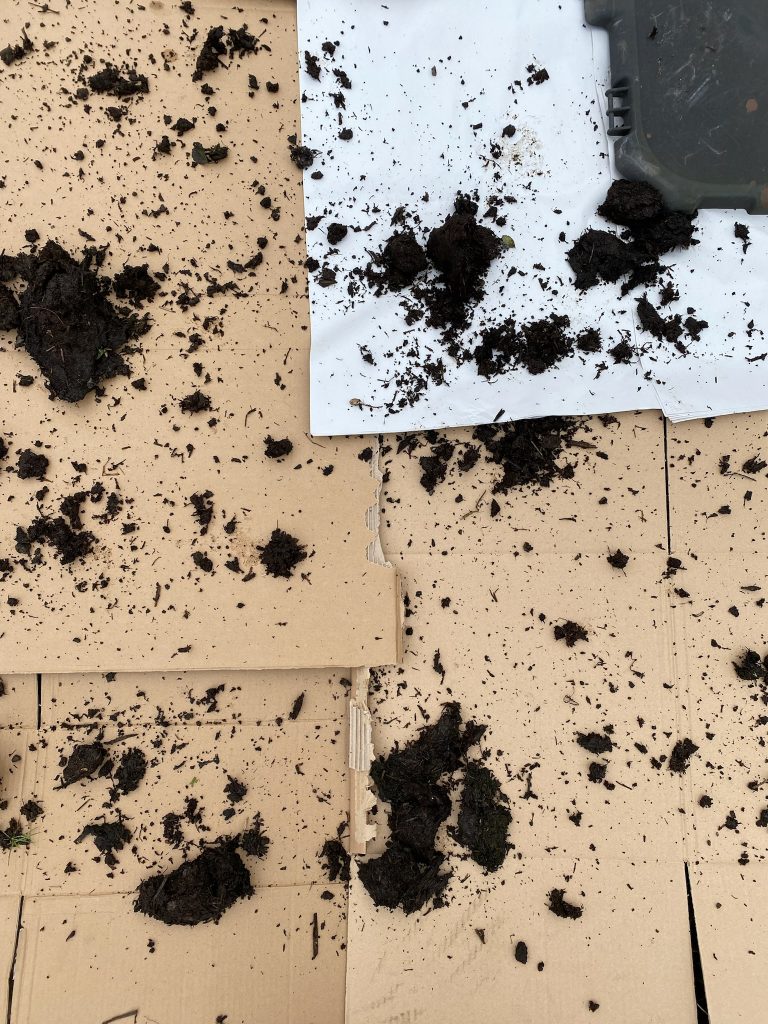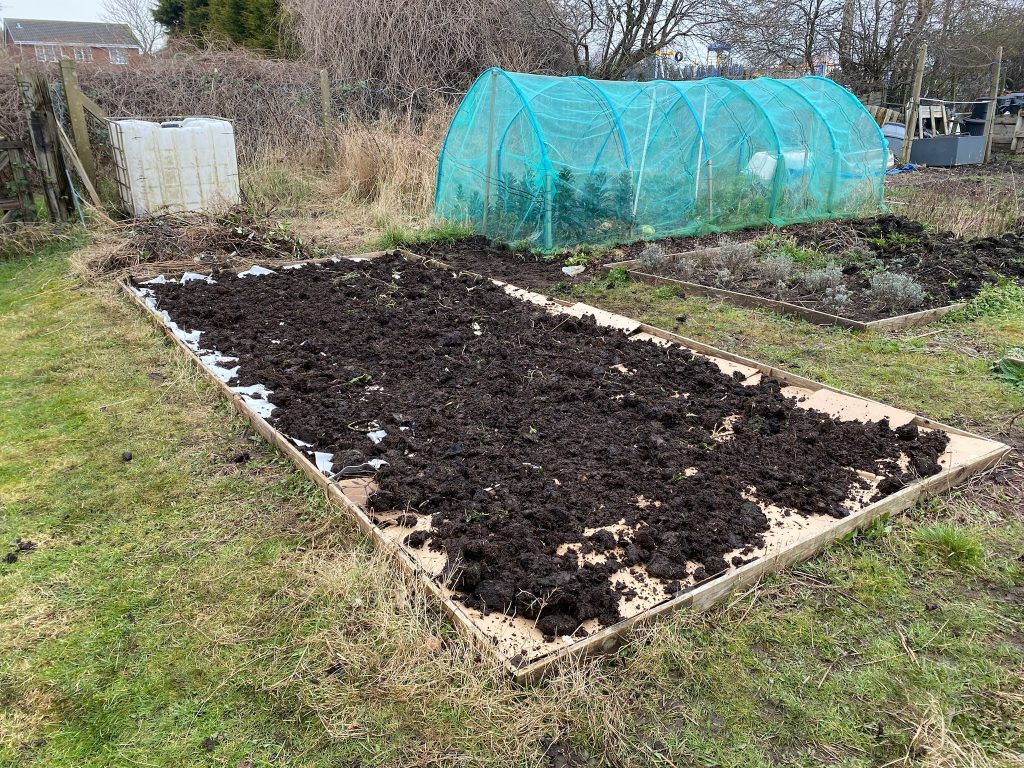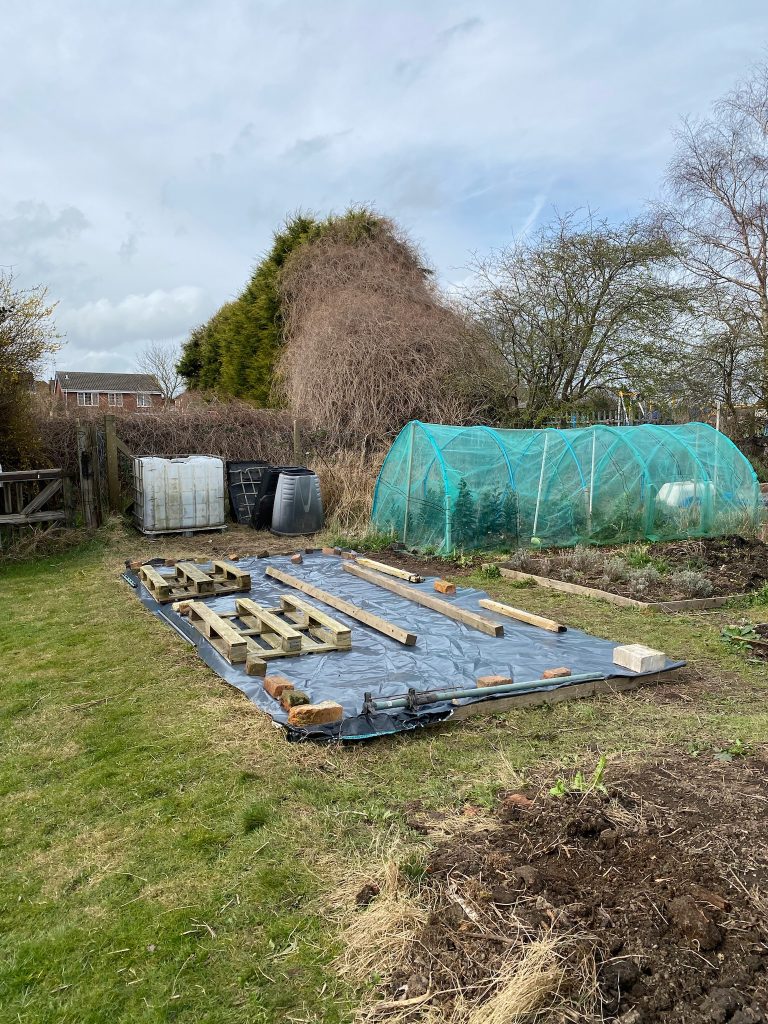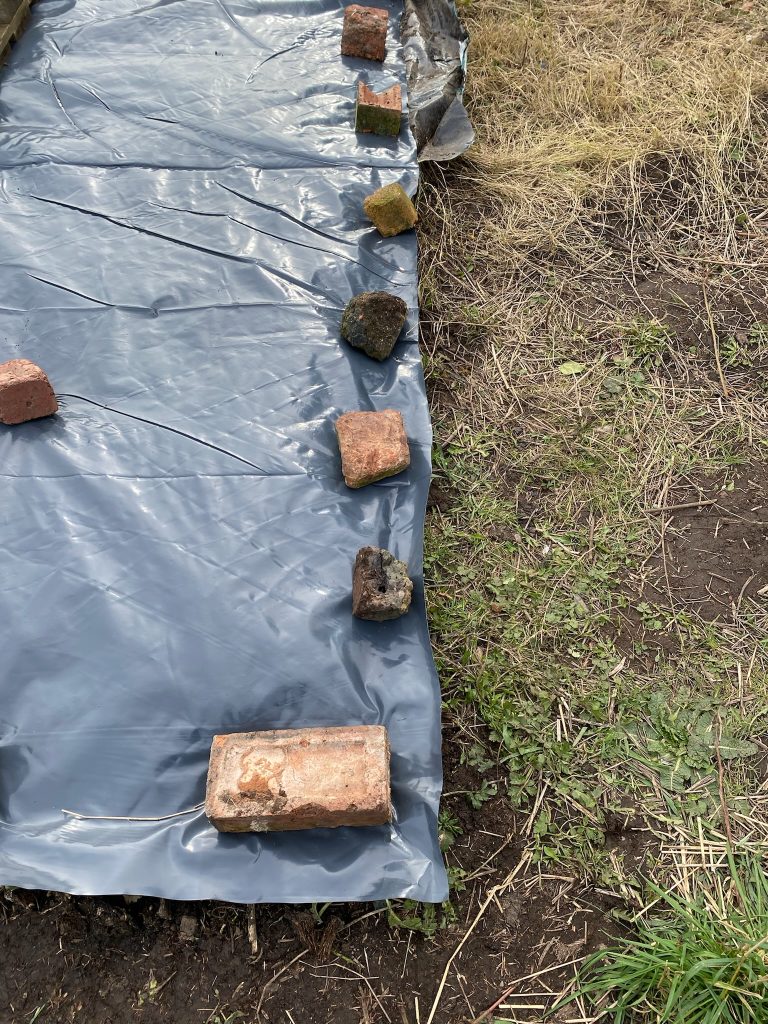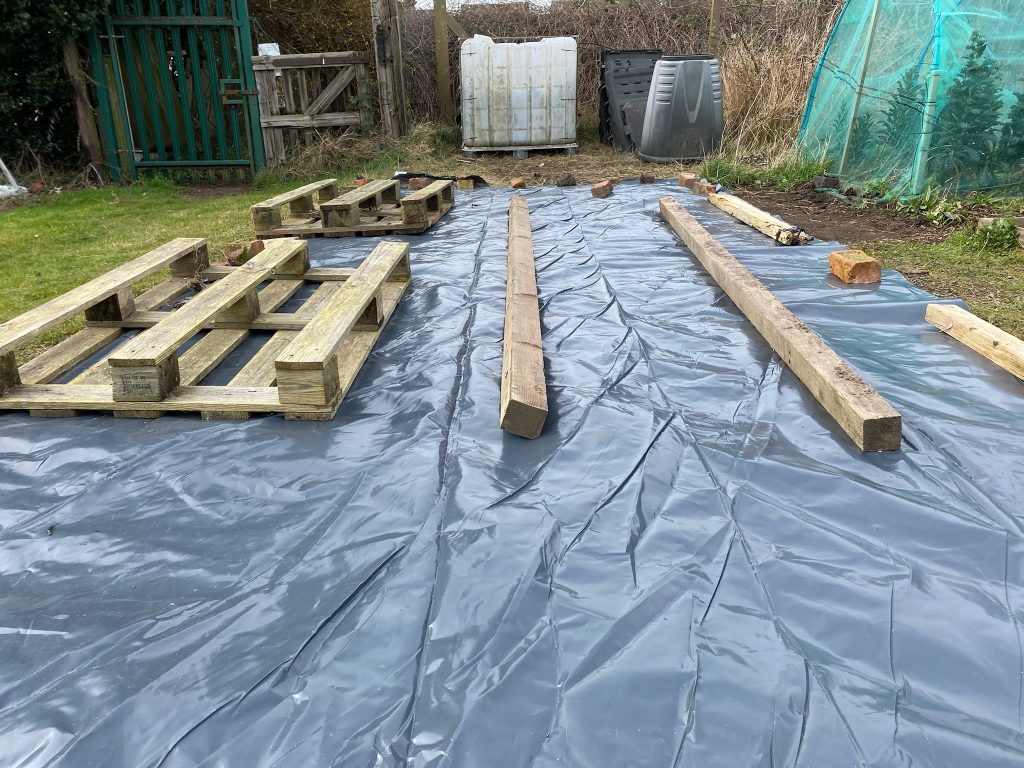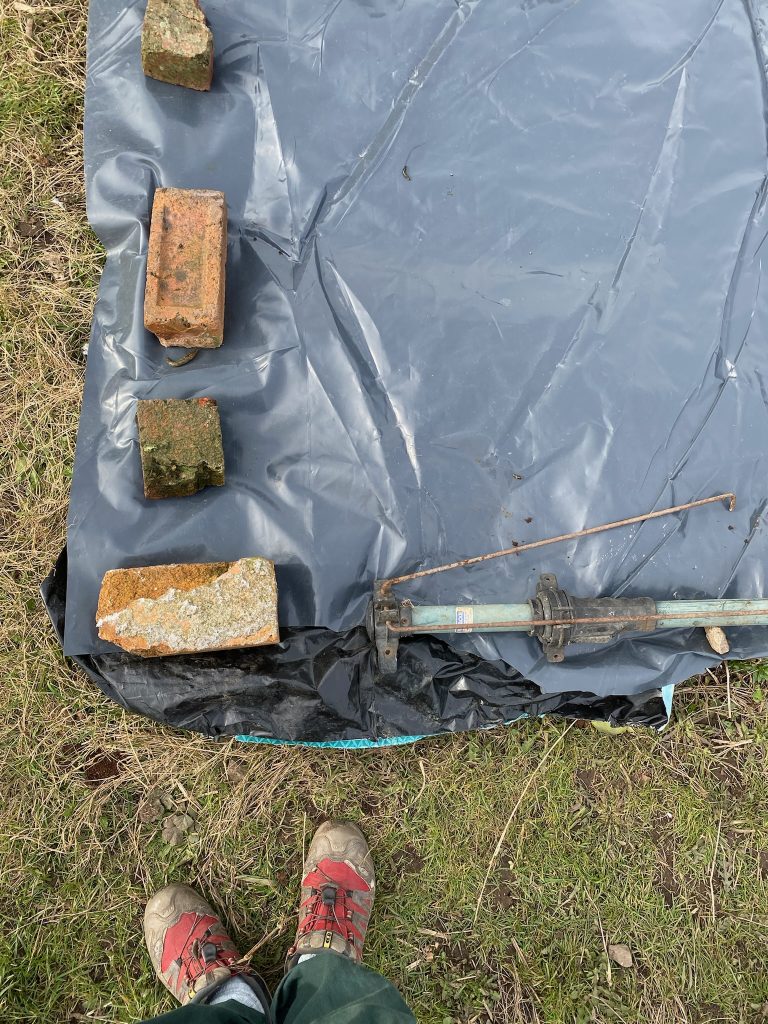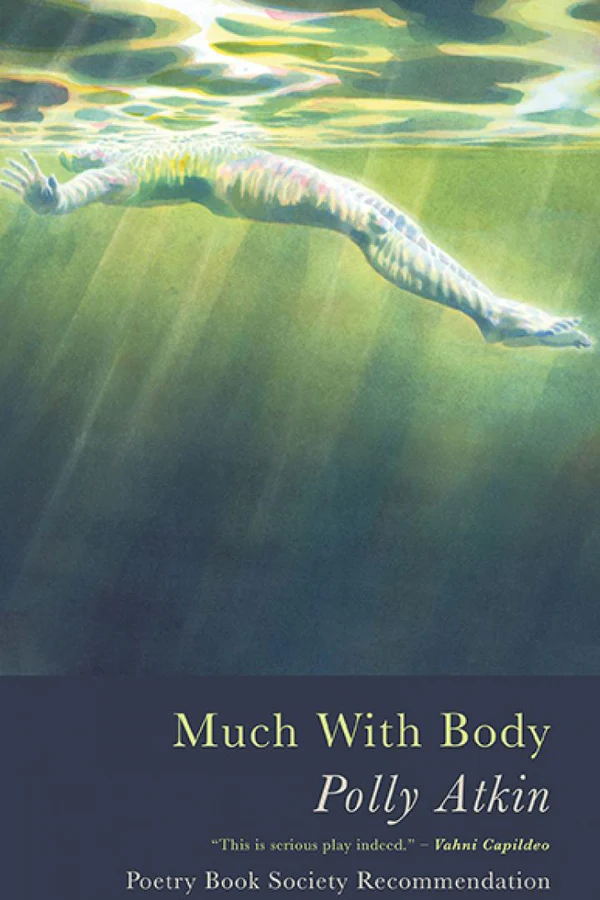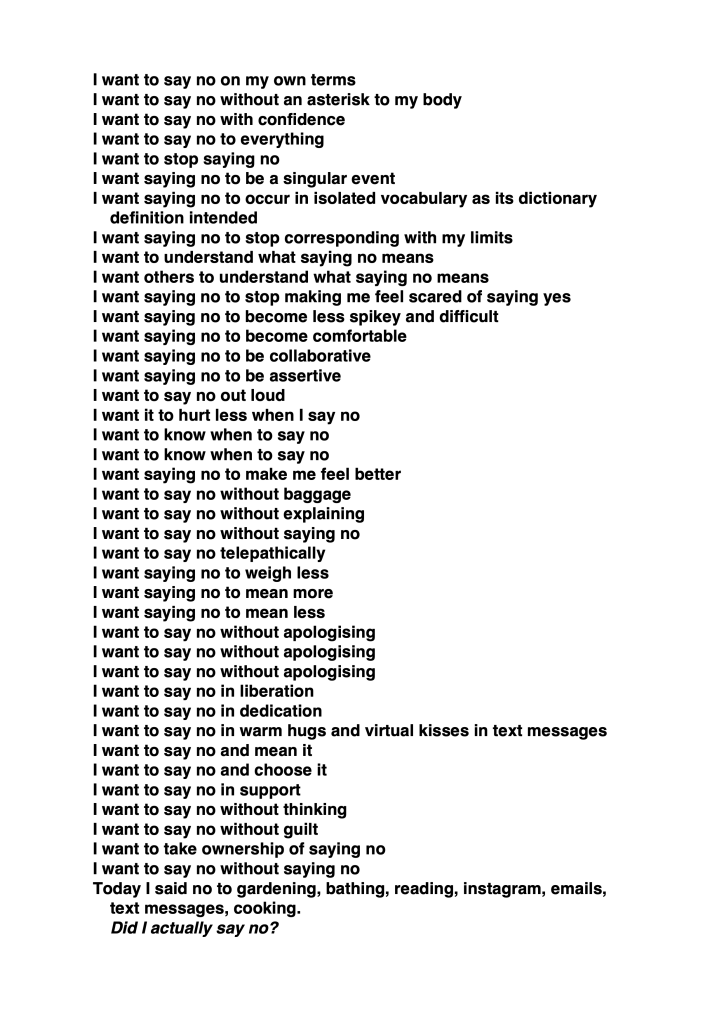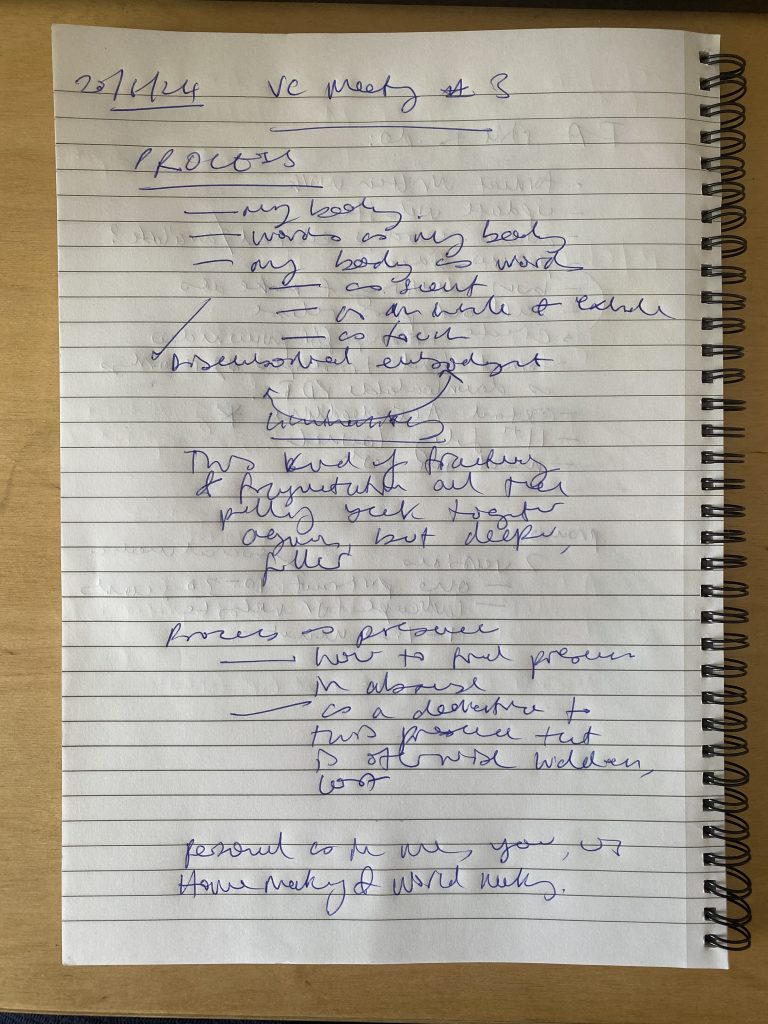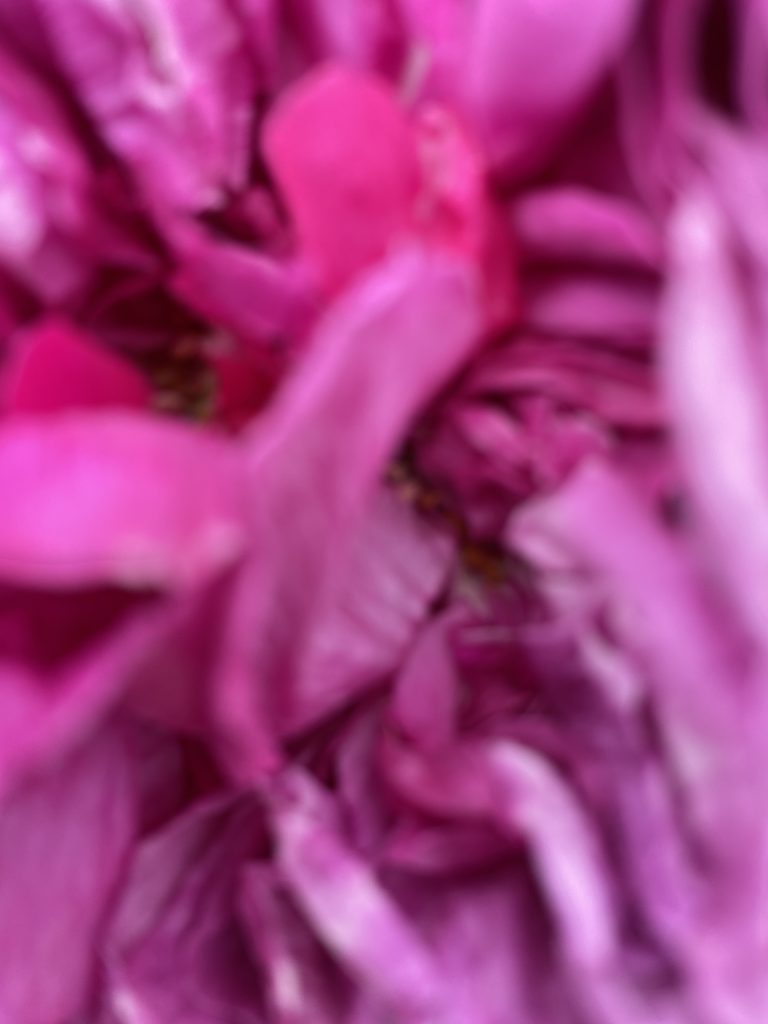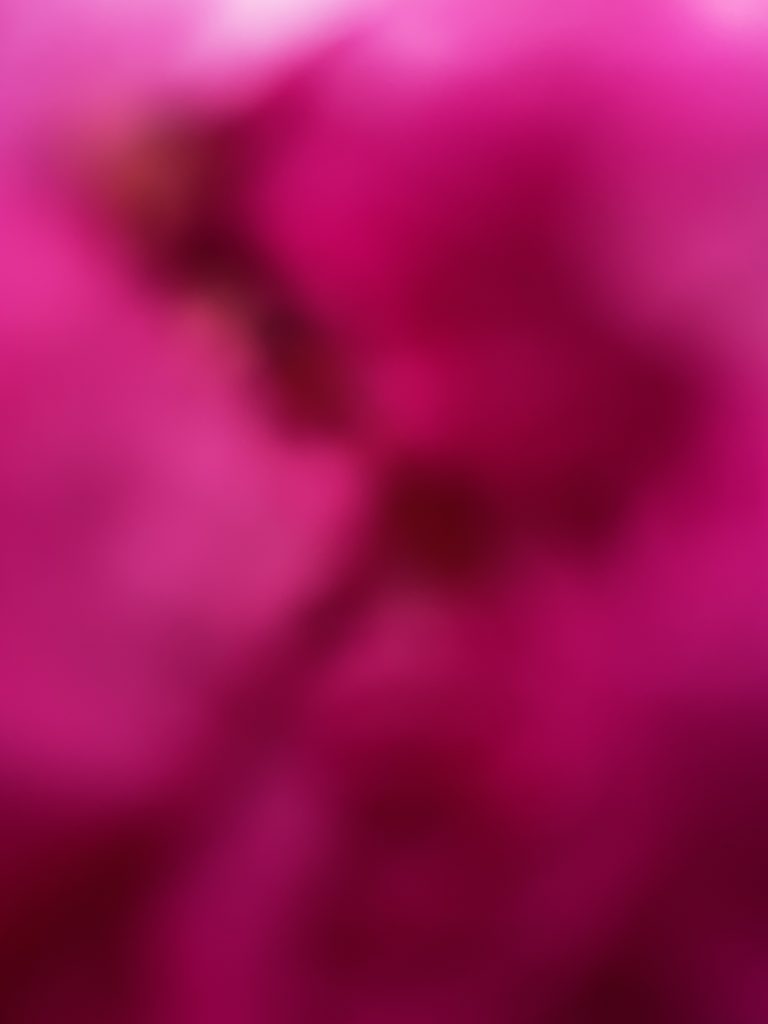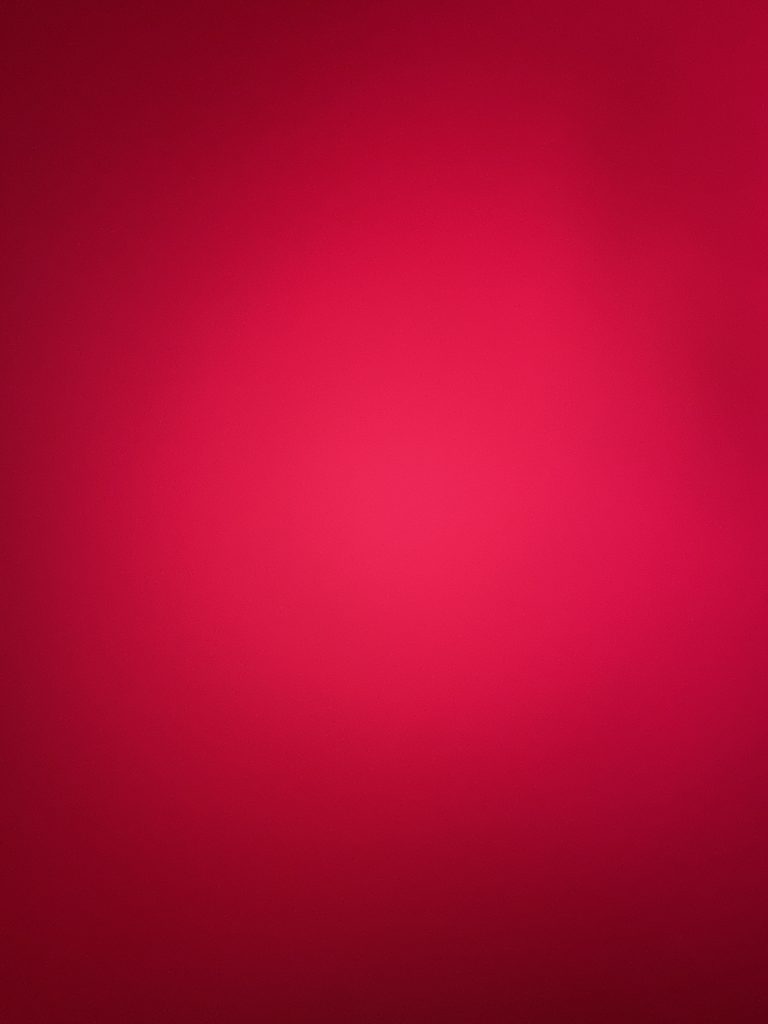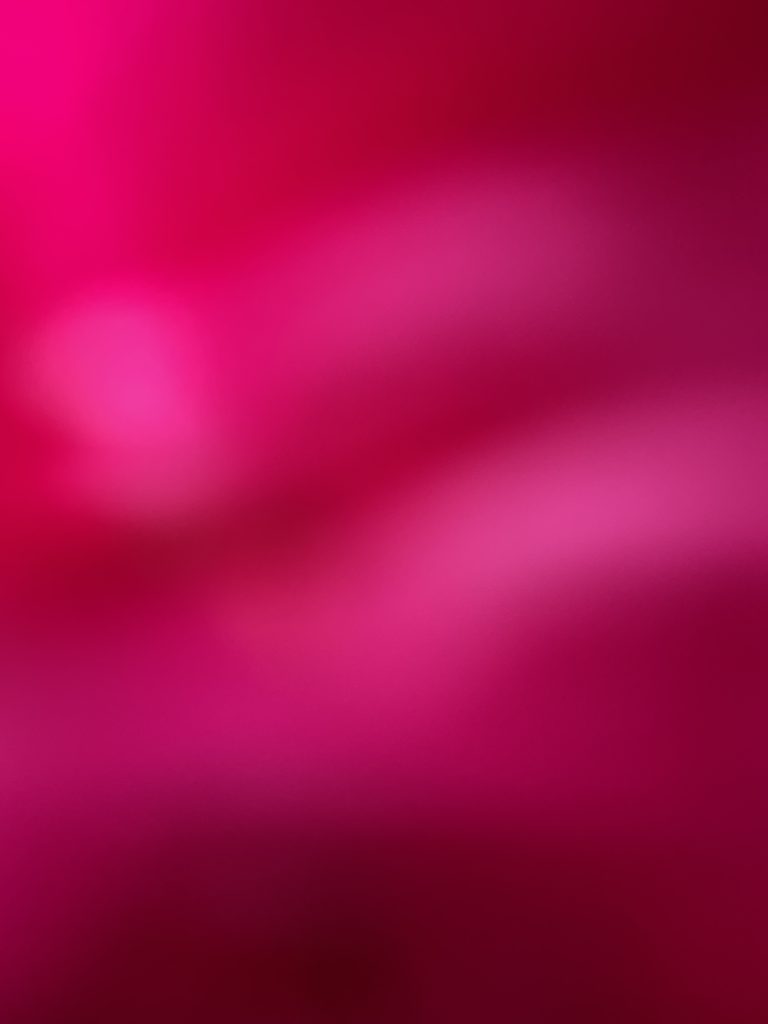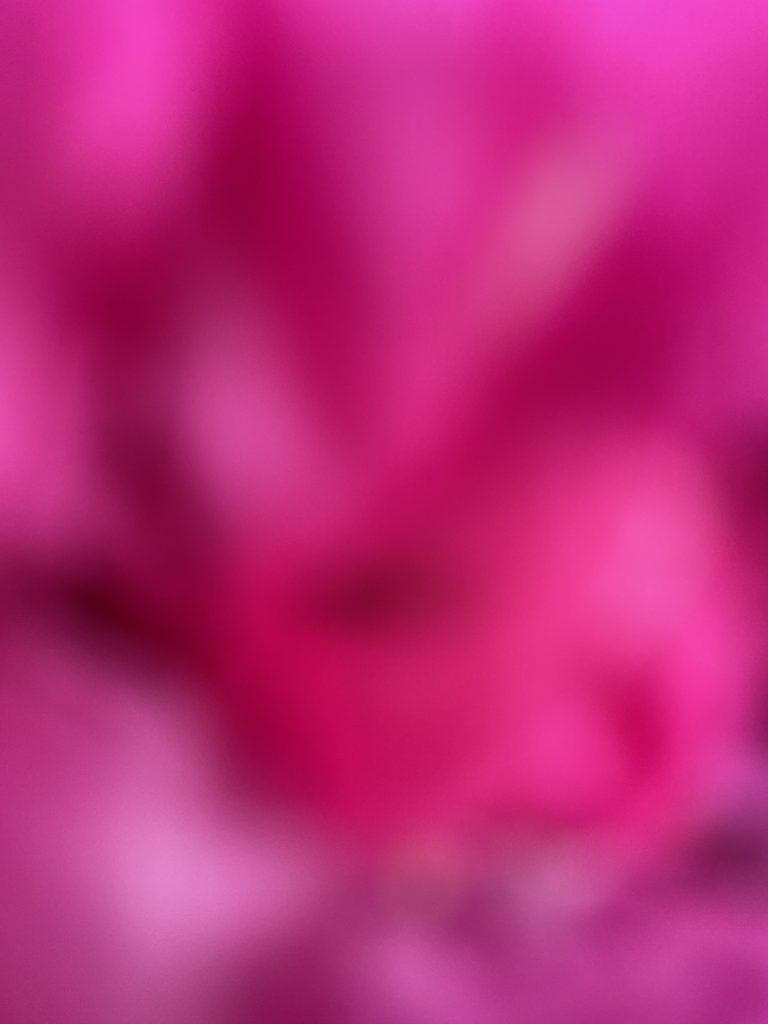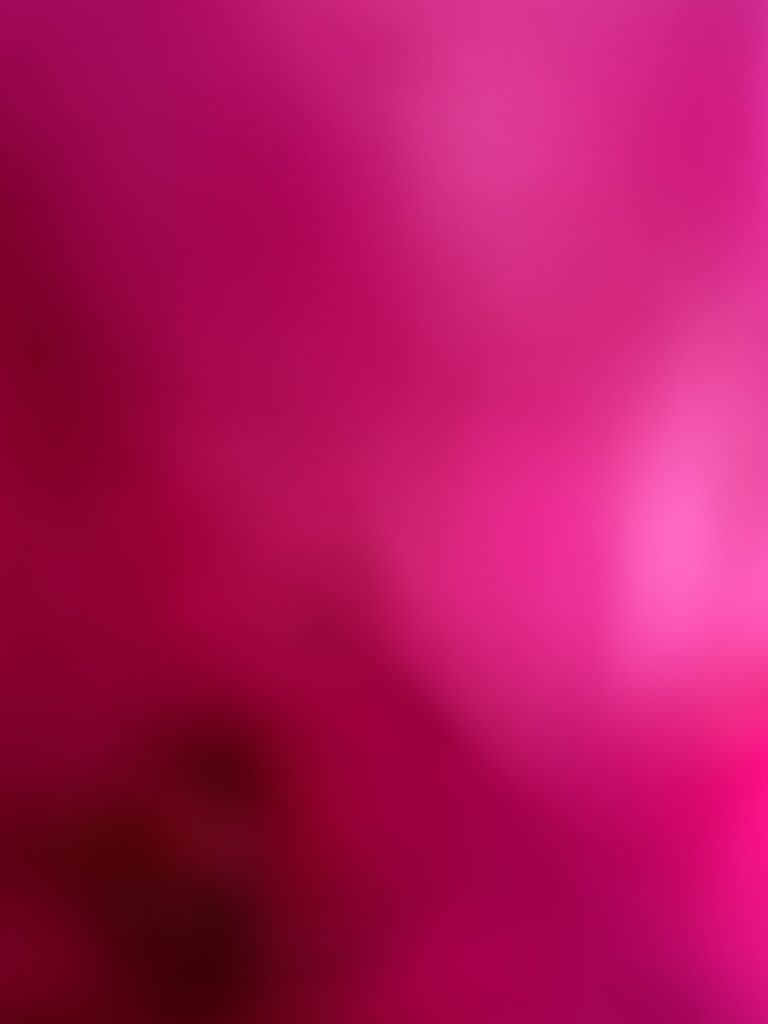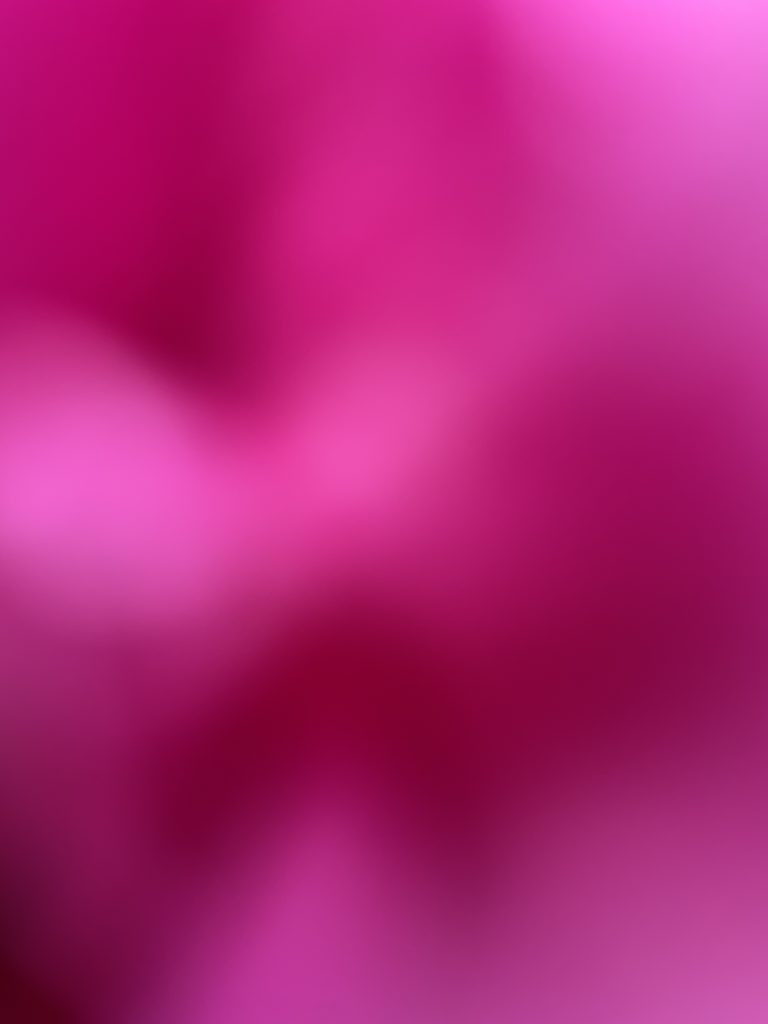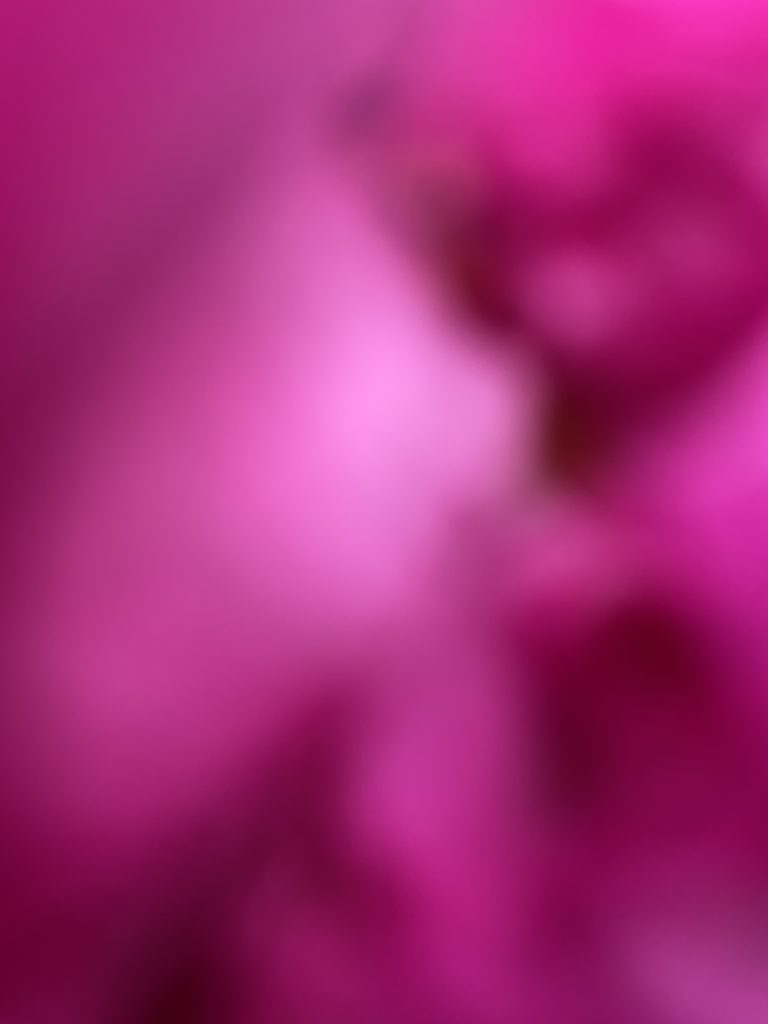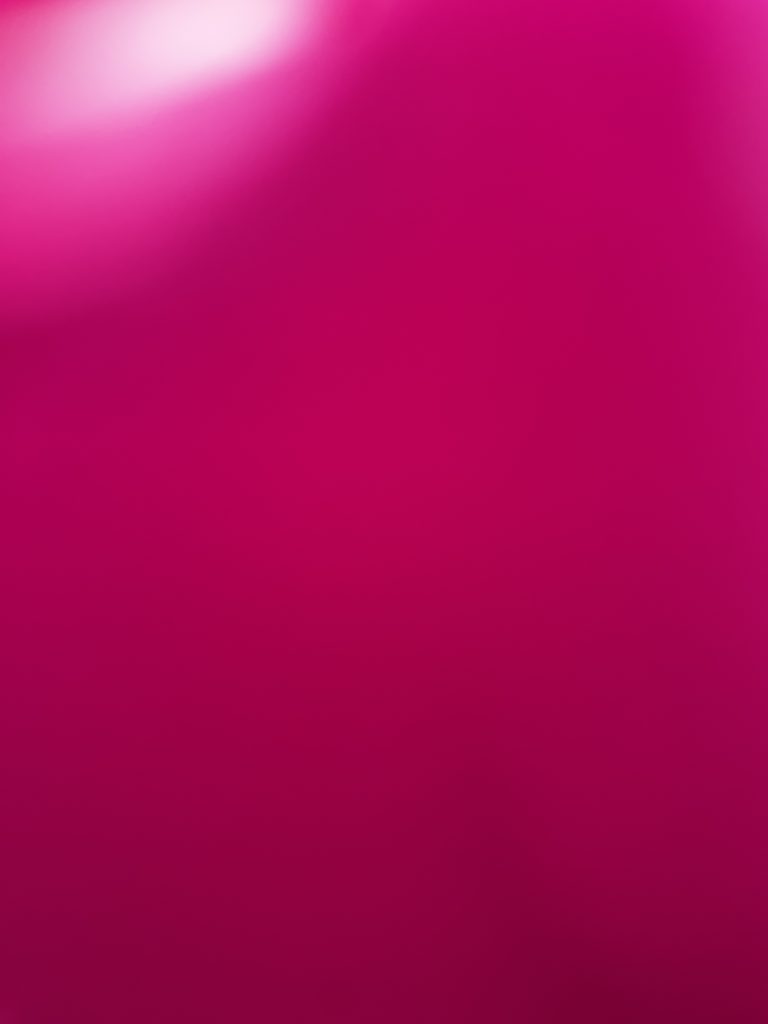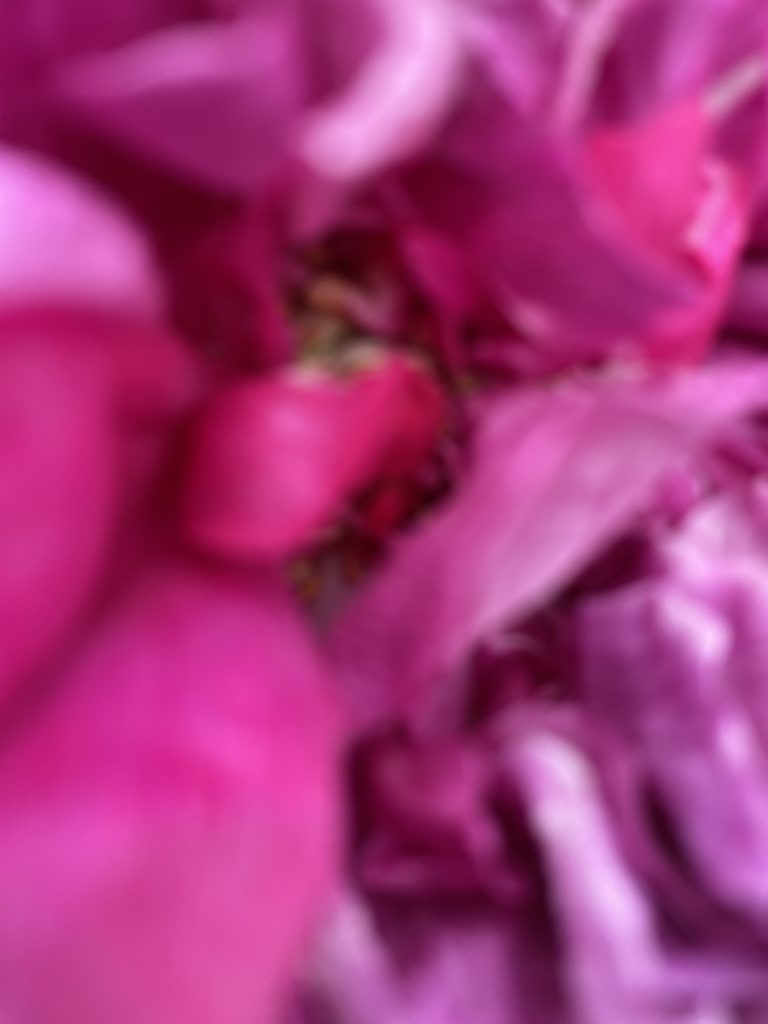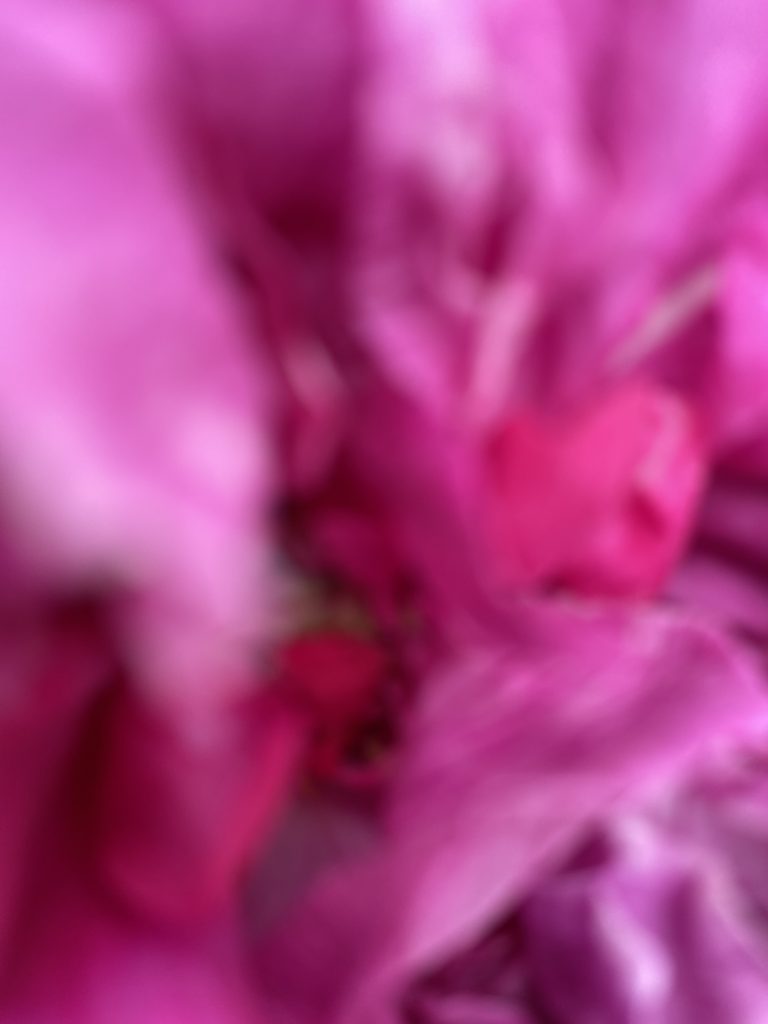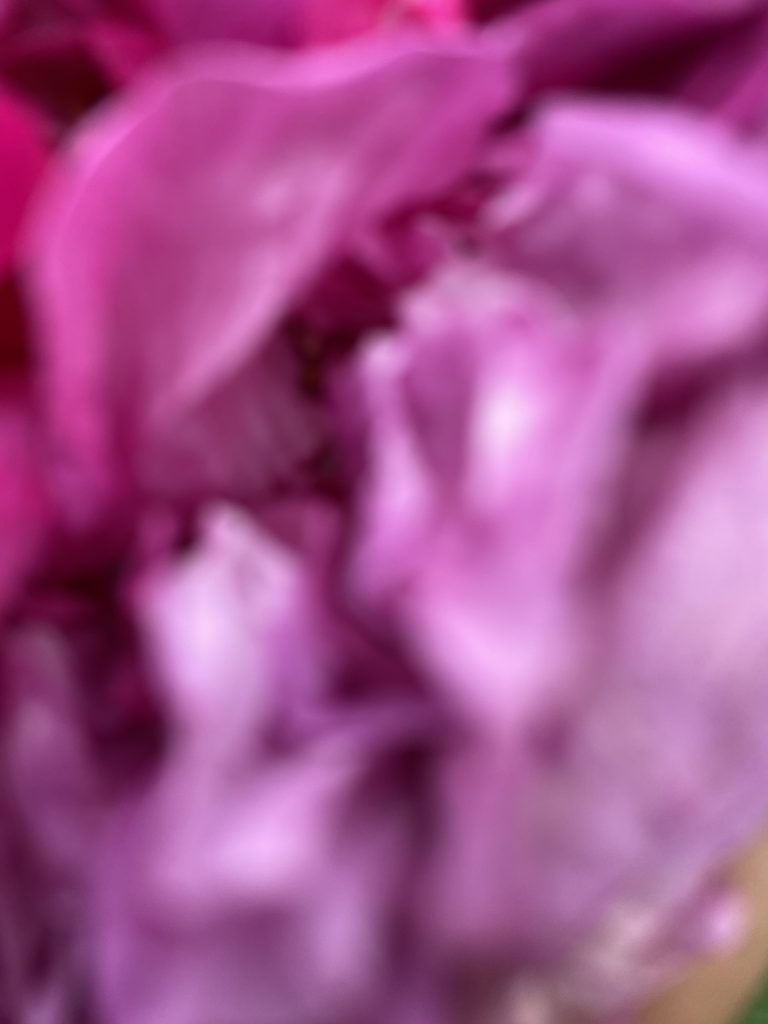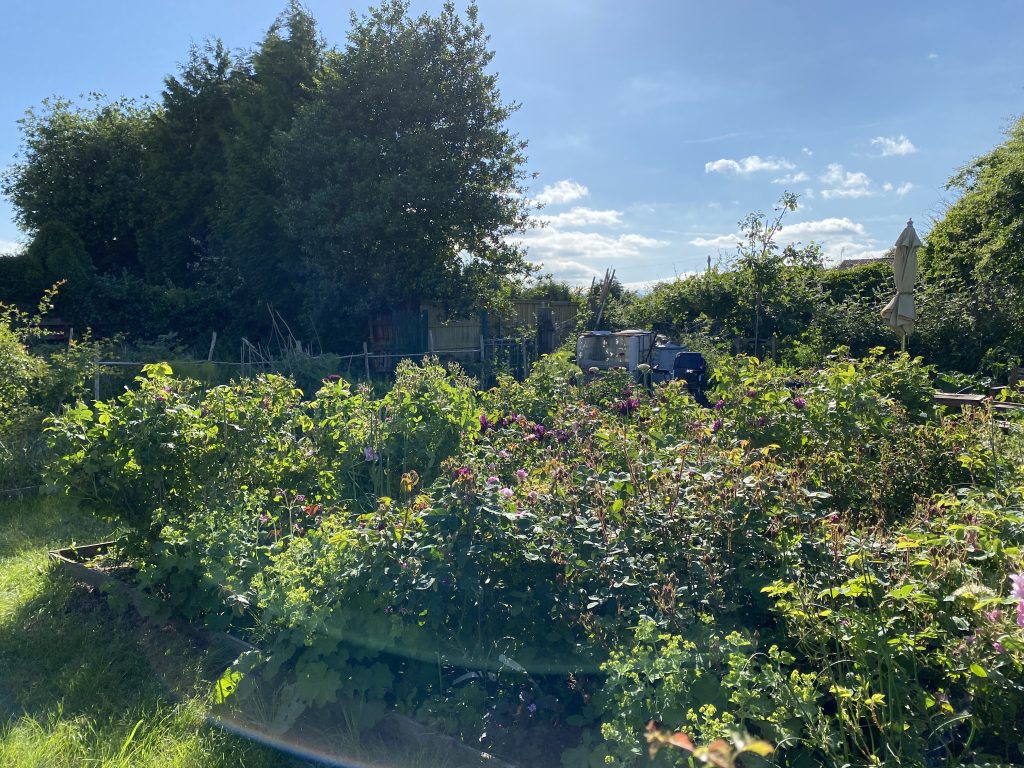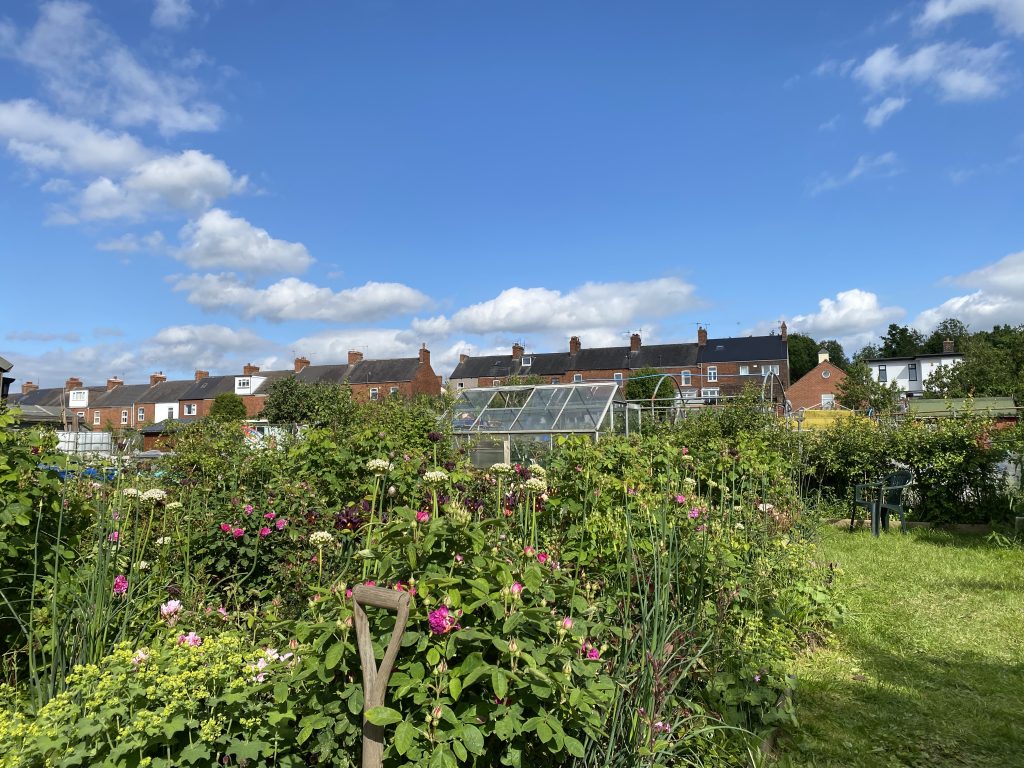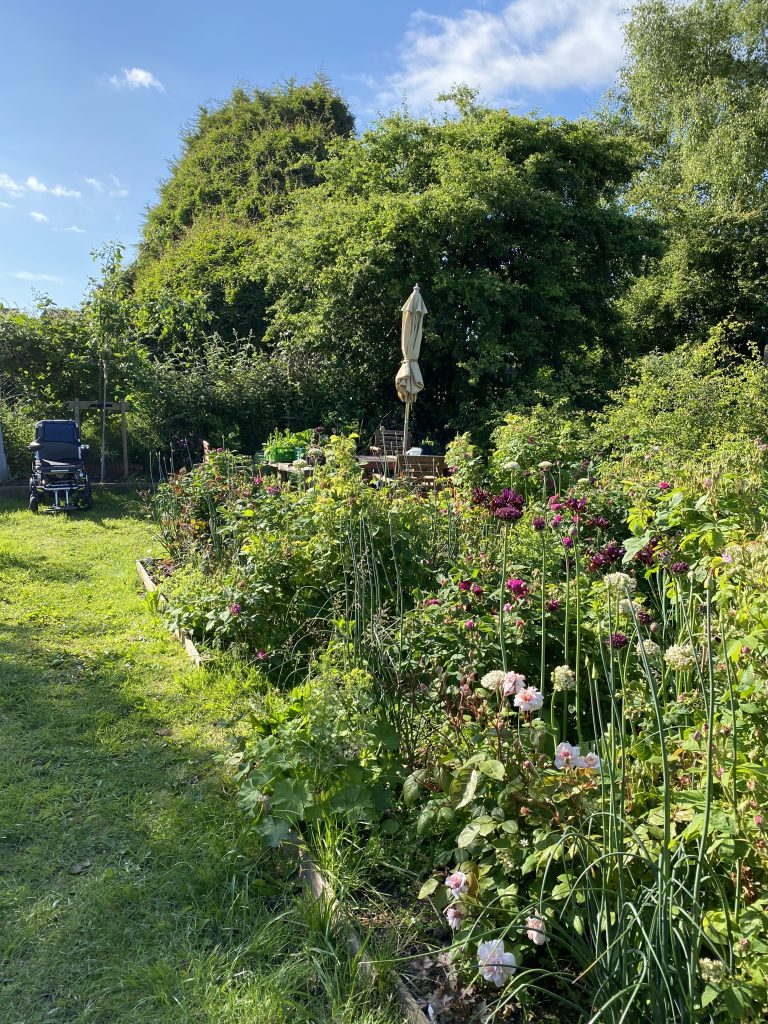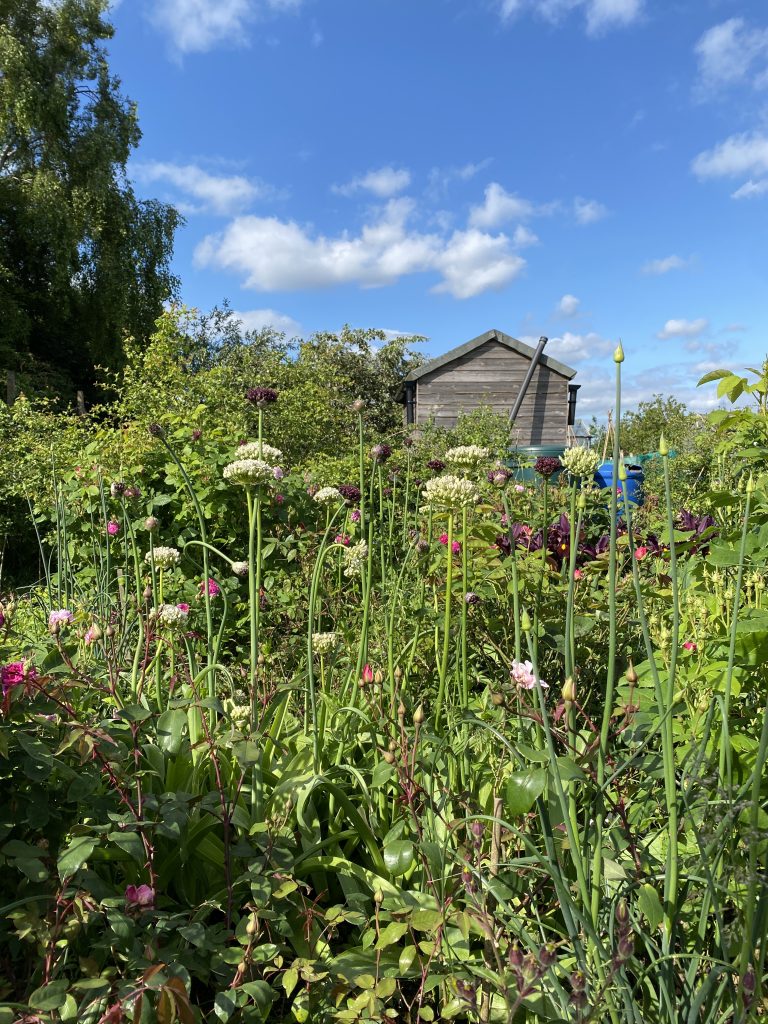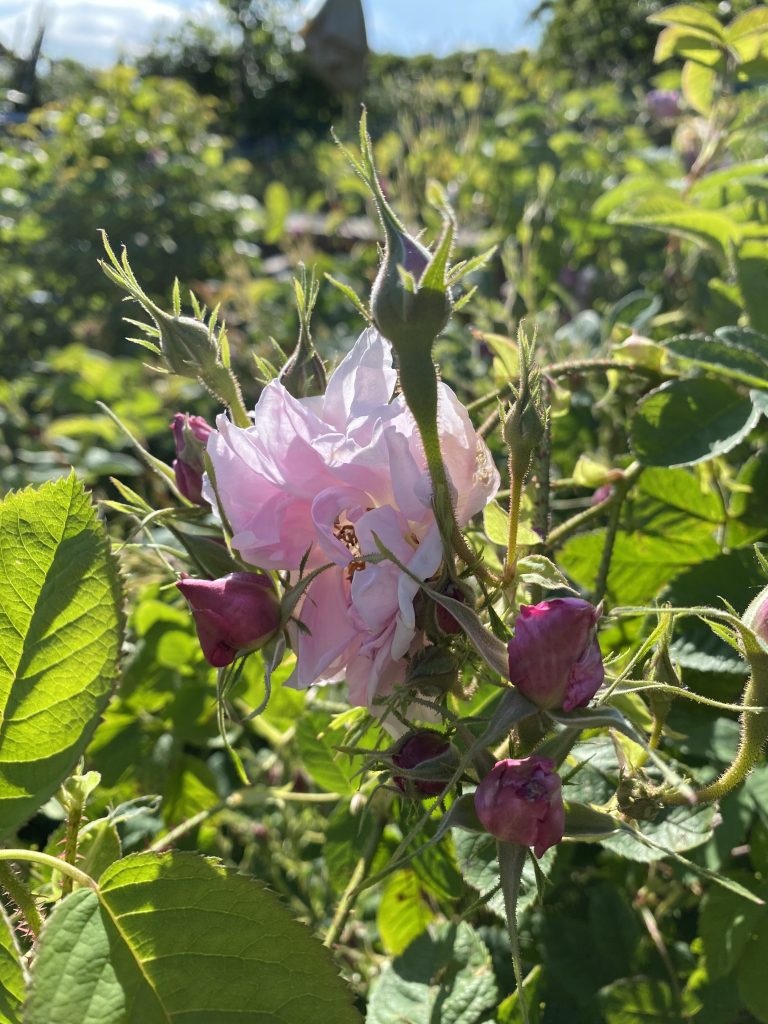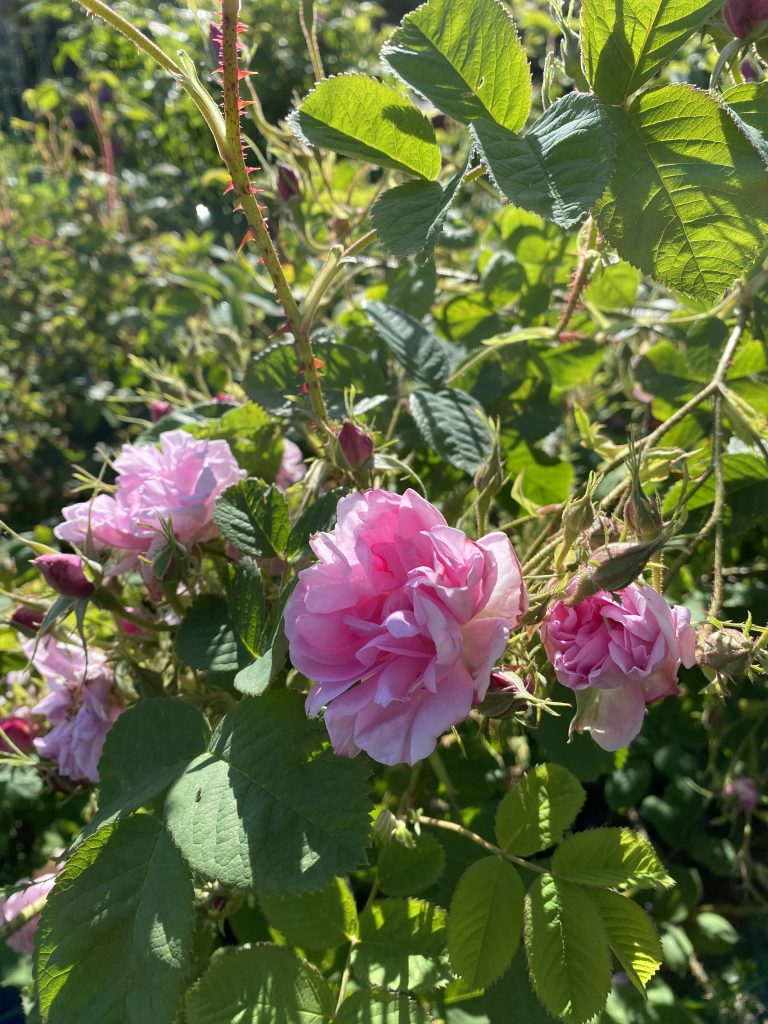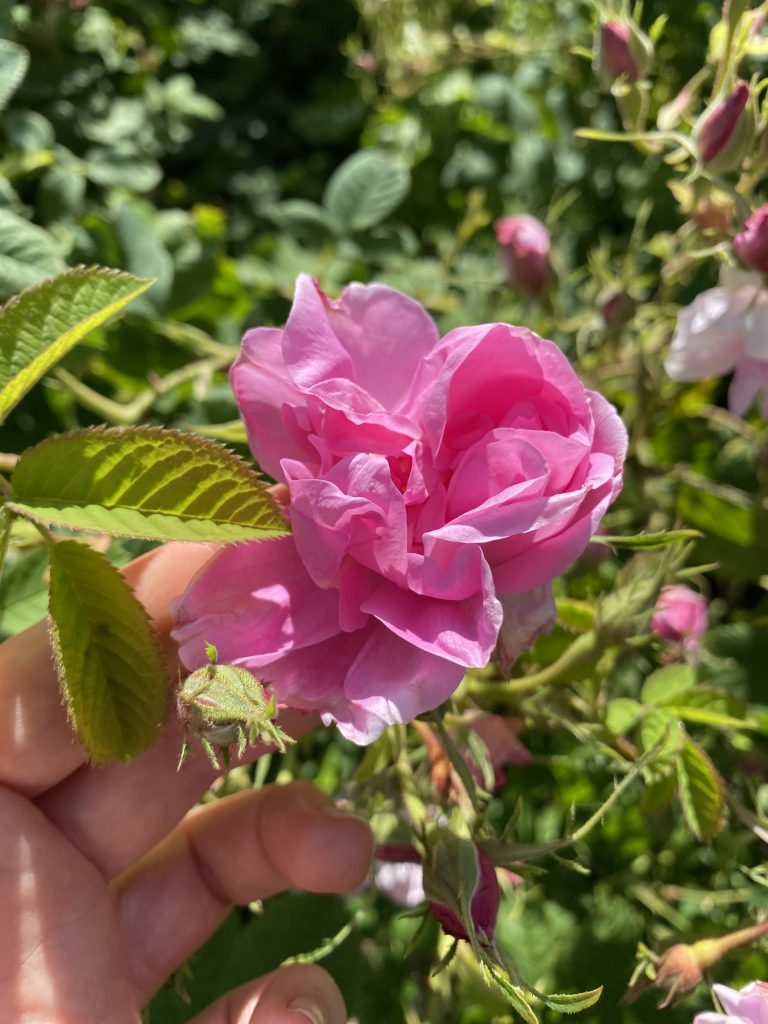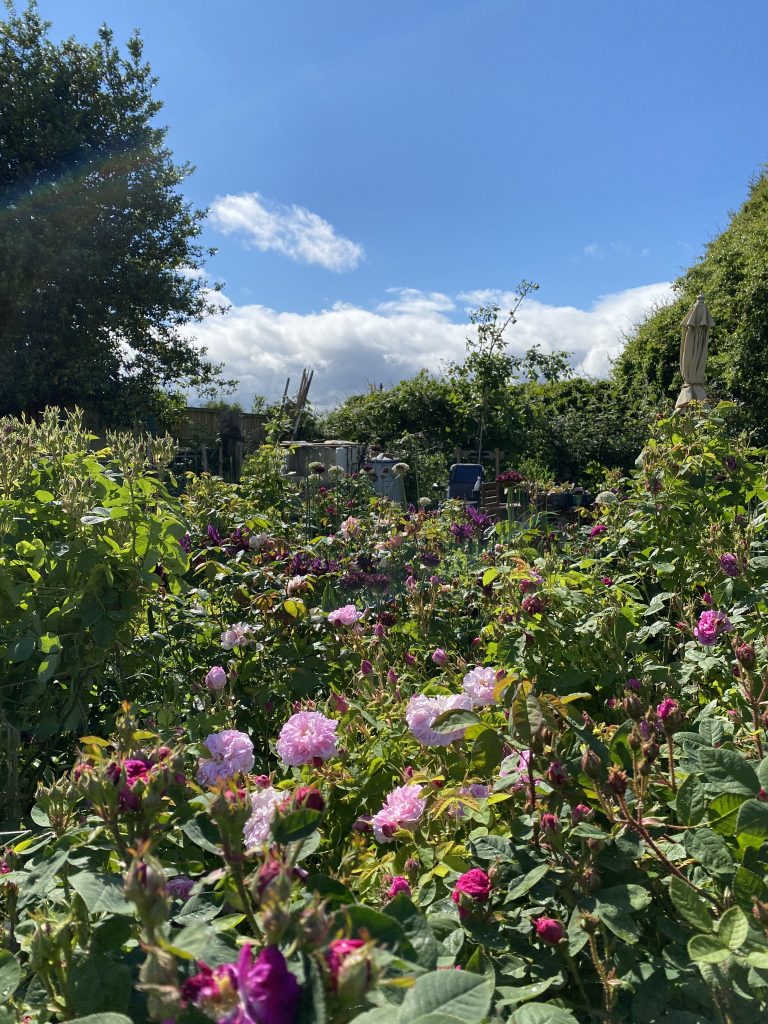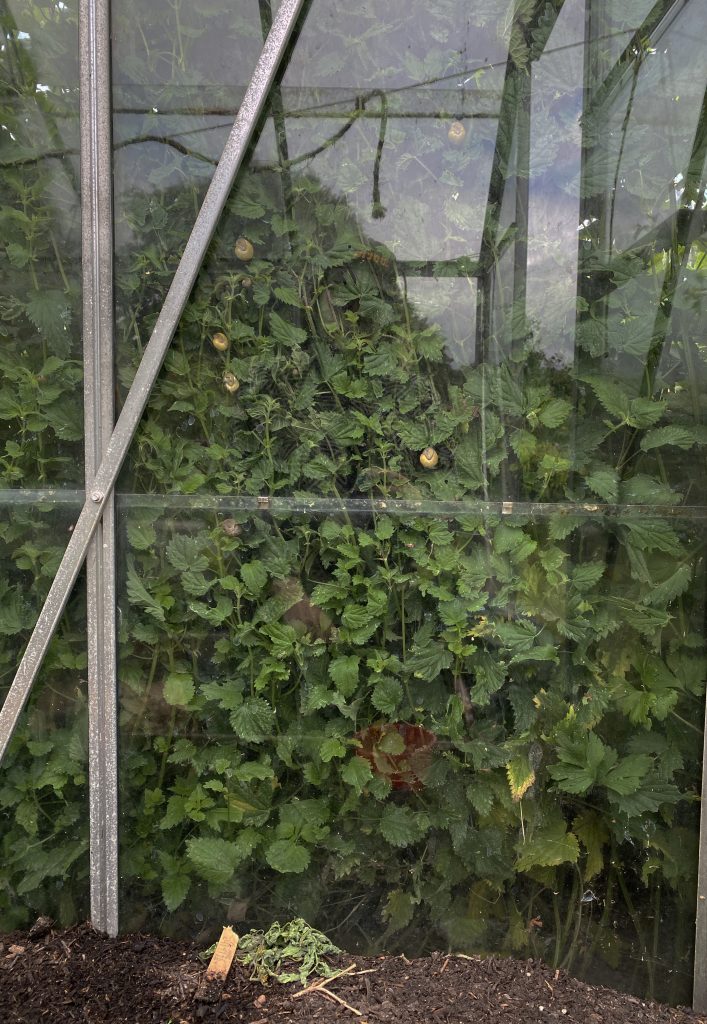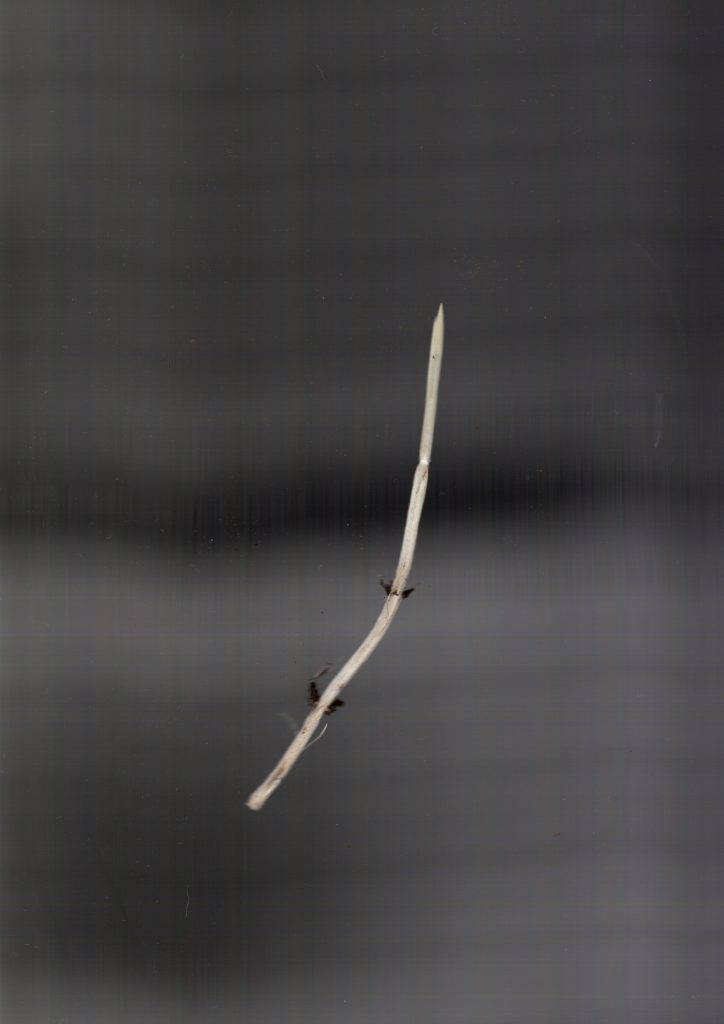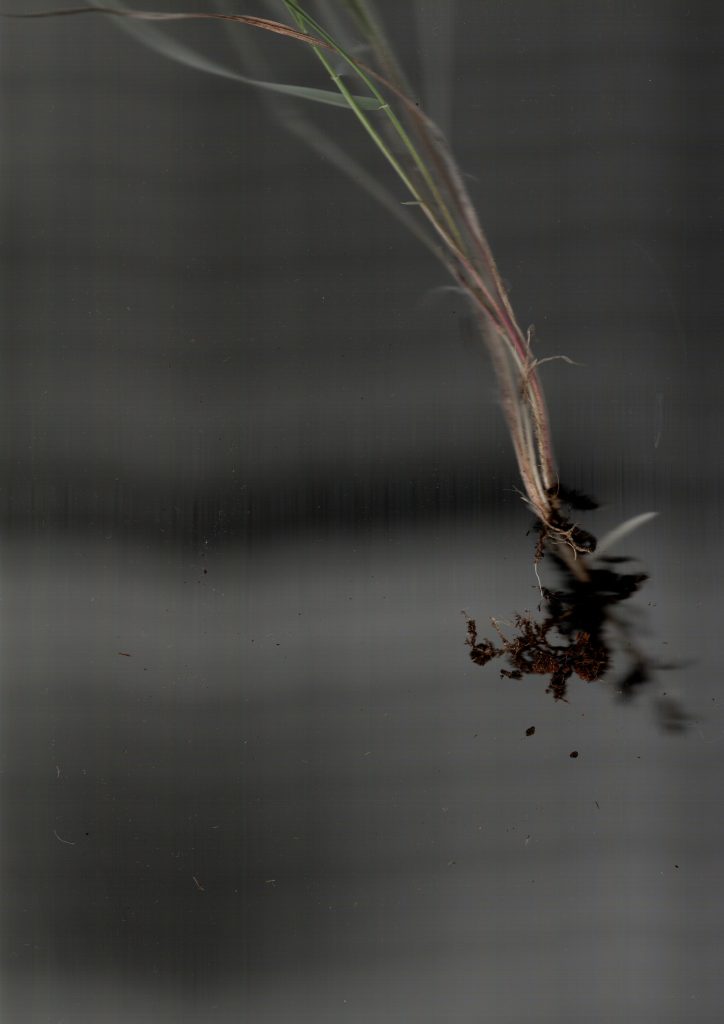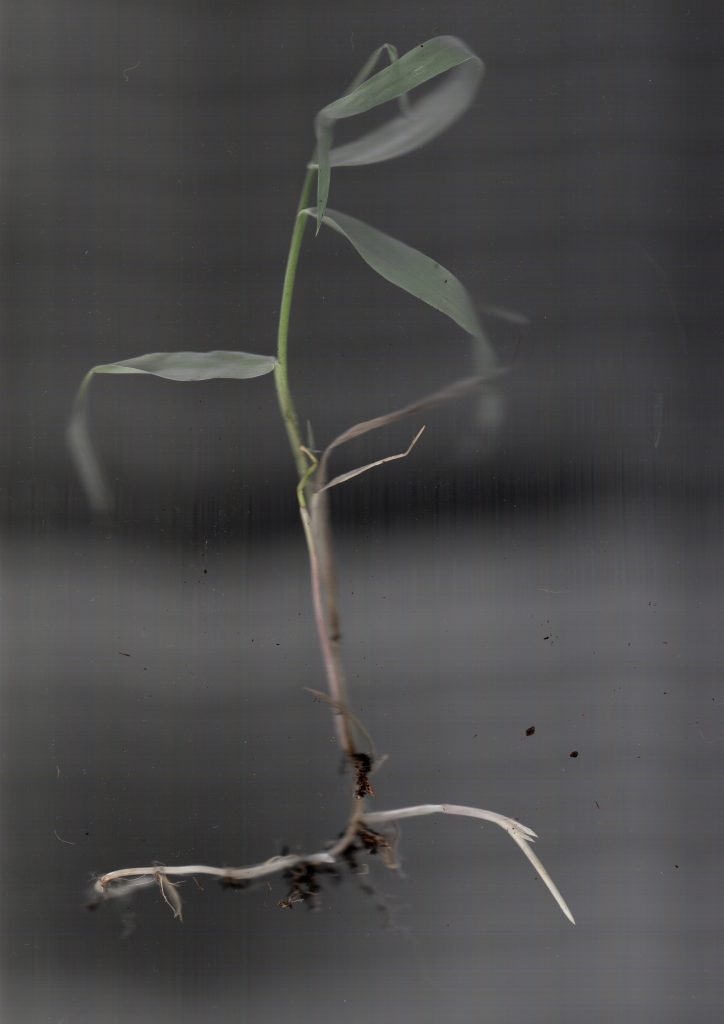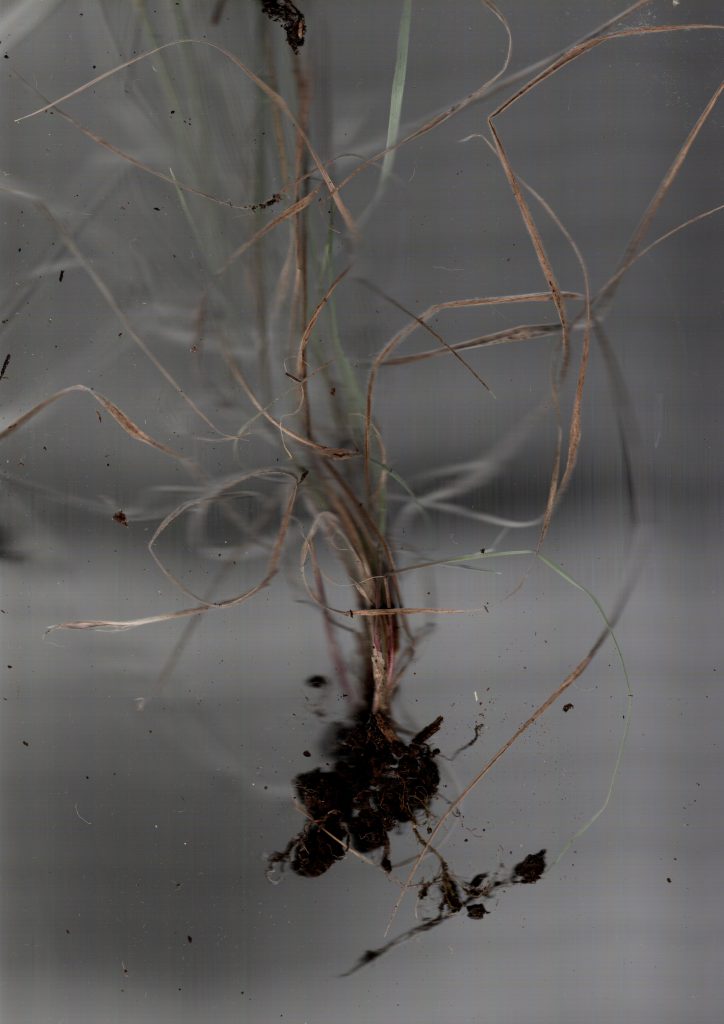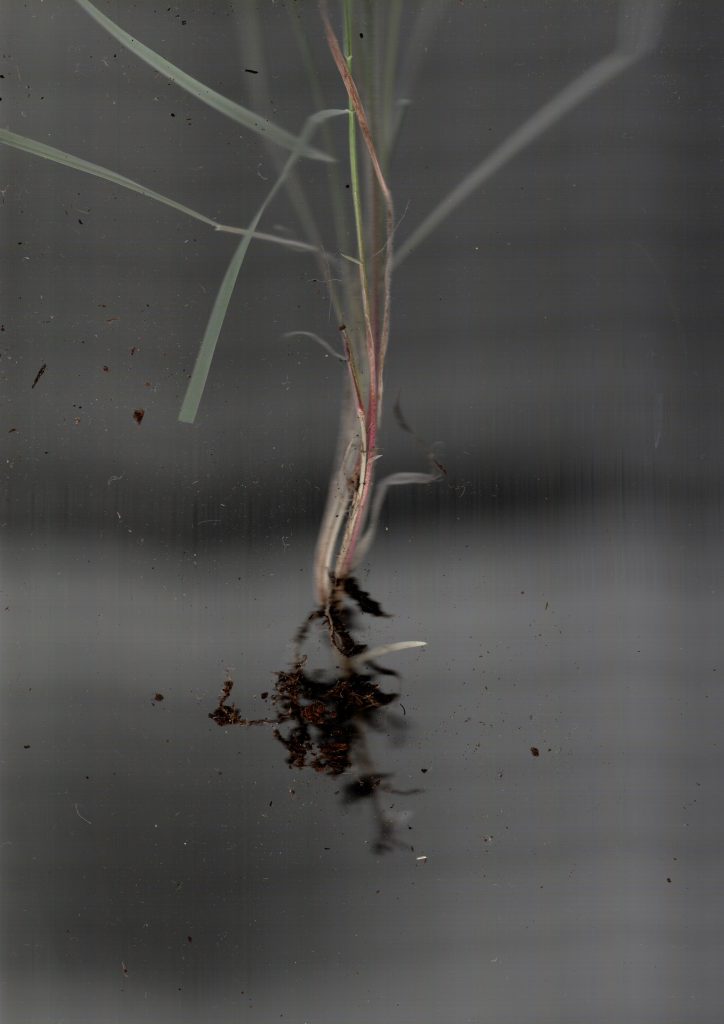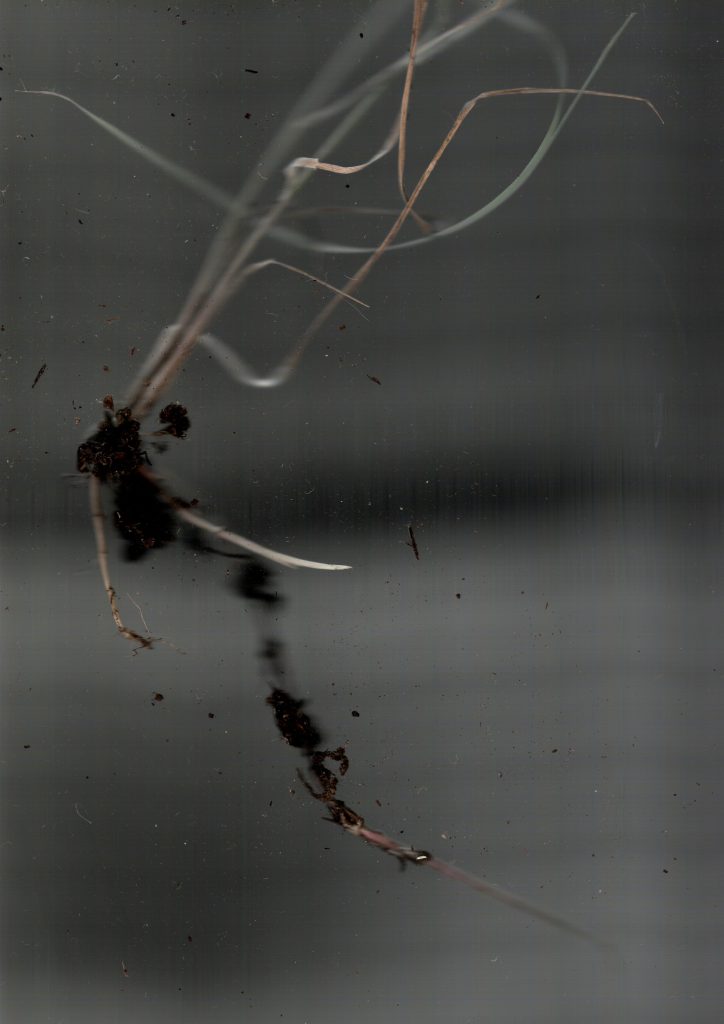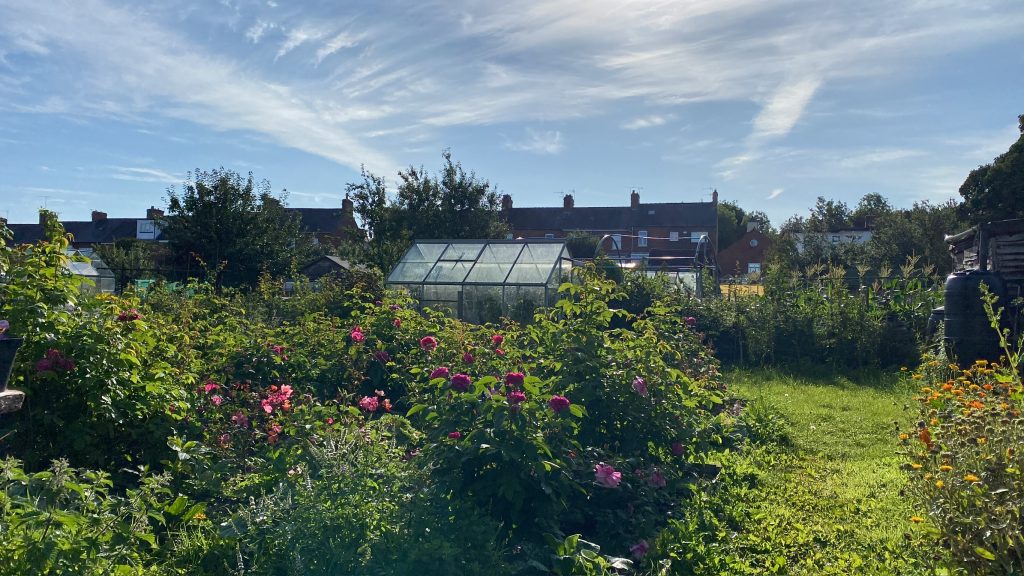
Image: Bella Milroy’s studio-allotment (image courtesy of the artist), June 2023
Image description: A digital photograph (landscape, colour), of what looks like some kind of garden seen on a sunny day with blue sky and a wash of light cloud. There is a greenhouse with a lawn to the side and a row of red brick terrace houses in the distance. In the foreground is a number of shrubby plants with colourful flowers on them in shades of pink. They look like they could be roses. The scene is bright and beautiful.
Hi! I’m Bella Milroy, a interdisciplinary sick and disabled artist based in my hometown of Chesterfield, North Derbyshire.
Since early 2022 I’ve been building a rose garden at my studio-allotment as a way of exploring scale in the context of illness; sculpting a space via crip-time and using roses as an extension of my body. I use the space to enhance my gardening practice, build sculpture, draw, paint, make photographs, and play with my A0 flower press.
This has become an essential motivation for core lines of inquiry in my work; my body as my practice; finding presence in the absence of disabled bodies; the threshold of where the disabled body leaves the private space and meets a public one.
In this residency, I want to use this space to share this studio with my peers, present work and engage in the critical creative conversation about disability, gardening, crip-time and making art as a disabled artist.
Process is fundamental to me as a disabled artist. I’m excited by a methodology that embraces making which is both interesting and dull, beautiful and painful, using this to explore the complexities of disabled experiences that at its heart is a practice of trying to hold both joy and sorrow at the same time.
I am excited to share this aspect of my practice in this public space, something that has up until now mostly remained a solely internal, private facet of my making. I hope you enjoy it – feel free to get in touch through the comments!
